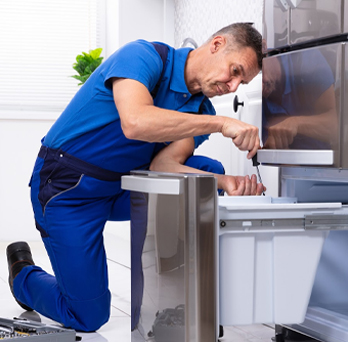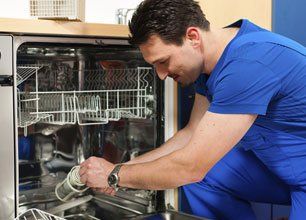Lower Your Carbon Footprint with Repairs from Emergency Sub-Zero Repair Dependable Refrigeration & Appliance Repair Service
Lower Your Carbon Footprint with Repairs from Emergency Sub-Zero Repair Dependable Refrigeration & Appliance Repair Service
Blog Article
The Ultimate Guide to Do It Yourself Appliance Fixing Methods
From fridges to dishwashing machines, recognizing just how to troubleshoot and repair these devices can save you time and money. Are you prepared to find essential strategies that will empower you to deal with repairs confidently?
Comprehending Typical Appliance Issues
When you rely upon your home appliances, it can be irritating when they instantly quit working or break down. Understanding usual device troubles can assist you fix issues efficiently. For example, if your refrigerator isn't cooling down, examine the temperature level settings or examine the door seal for gaps. A defective cleaning device could be due to a clogged up drainpipe filter or a damaged belt.
If your oven isn't home heating, damaged components or thermostat problems can be to criticize. Dishwashing machines typically experience problems with water drainage, so see to it the filter is clean and the drainpipe hose pipe isn't kinked.
Additionally, listen for uncommon sounds; they usually suggest mechanical concerns. By identifying these signs, you can conserve time and potentially prevent costly fixings. A little knowledge goes a lengthy way in keeping your appliances, so remain educated to keep everything running efficiently.
Essential Devices for Do It Yourself Repair Works
Prior to diving into DIY device repairs, it's crucial to collect the right devices to assure the process goes smoothly. Begin with an excellent set of screwdrivers, including both flathead and Phillips, as they're essential for opening up most home appliances. You'll likewise desire a set of pliers for gripping and turning wires or tiny parts.
Do not neglect a multimeter; it assists you examination electric components and diagnose issues effectively. A socket collection is helpful for loosening or tightening screws, while an utility blade can be valuable for opening up or reducing cords packaging.
Finally, take into consideration having a flashlight available to light up dark areas inside your home appliances. With these crucial devices, you'll be well-appointed to tackle different repair work, saving both time and money. Collect your equipment and obtain prepared to roll up your sleeves!
Security First: Precautions to Take
Prior to you begin any type of home appliance fixing, it's important to focus on safety and security. Ensure you wear personal safety tools, separate the source of power, and keep your workplace arranged. These simple preventative measures can aid stop mishaps and guarantee a smoother fixing process.

Individual Safety Tools
Safety and security equipment is a vital part of any DIY appliance fixing job. Steel-toed boots are also a wise option, especially when raising heavy devices. Keep in mind, being prepared with the right equipment maintains you secure and concentrated on completing your fixing successfully.
Source Of Power Disconnection
To assure a secure DIY appliance repair work, detaching the power resource is crucial. This simple step avoids electric shocks and assurances that you can concentrate on the repair service without stressing concerning unintended activation. When you're certain that the power is separated, you can with confidence continue with your repair services, recognizing you have actually taken the needed preventative measures to protect yourself.
Job Location Company
A well-organized job area can make all the distinction in your DIY device repair task. Start by removing your workspace of clutter to protect against accidents and interruptions. A clean space not just boosts effectiveness yet likewise maintains you safe while you function on your device repair work.
Step-by-Step Overview for Fridge Repair Works
When your refrigerator starts acting up, it can be aggravating, however dealing with the issue yourself can save you time and money. Check for common issues like temperature fluctuations or unusual sounds. For a noisy refrigerator, examine the follower and confirm it's not blocked.
If there's water merging inside, examine the door seals for damage or dirt, and tidy them if essential. For ice build-up, clear the defrost drainpipe. As soon as you have actually attended to the issue, plug the fridge back in and check it for a couple of hours. If the trouble lingers, you may need to change a damaged component, like the compressor or follower motor. Remember, do not think twice to get in touch with the guidebook or seek professional aid if required.
Taking Care Of Washing Machine Issues
Simply like refrigerators, cleaning equipments can provide their own set of difficulties, but numerous problems can be settled with a little troubleshooting. If your maker won't begin, check the power cord and confirm it's connected in. Next off, inspect the door latch; a malfunctioning lock can protect against the cycle from starting. If you observe unusual noises throughout operation, it may be because of international things embeded the drum or the drainpipe pump.
Tightening up these can commonly resolve the problem. Normal maintenance, like cleaning the filter, can protect against lots of issues from occurring.
Fixing Ranges and ovens
Just how can you troubleshoot usual problems with your oven or cooktop? Begin by checking the power supply. Make particular it's plugged in and the breaker is not tripped. Verify the gas shutoff is open if it's a gas range. Next, examination the burners: if they do not ignite, cleanse the igniter and check for obstructions in the burner ports.
If your oven isn't heating, evaluate the temperature setups and confirm the door seals securely. If it's harmed., a defective home heating element might additionally be the culprit; you may require to change it.
For unequal food preparation, rotate your pans and take into consideration using an oven thermostat to validate accurate temperatures. Finally, if you hear uncommon sounds or smell gas, switch off the appliance right away and consult a professional. By adhering to these actions, you can identify and deal with lots of usual oven and range problems effectively.
Fixing Dish Washers Facilitated
When your dish washer begins breaking down, it can be aggravating, yet addressing typical problems isn't as difficult as it seems. You'll learn detailed troubleshooting techniques that will certainly help you determine the trouble, along with the vital devices you'll require to take on fixings on your own. Allow's make fixing your dishwasher a breeze!
Usual Dishwashing Machine Problems
While dishwashing machines are created to make your life much easier, they can often encounter common issues that leave you really feeling frustrated. One frequent trouble is inadequate cleansing performance; this typically happens due to clogged up spray arms or dirty filters. You could additionally see water pooling at the bottom, which can indicate a defective drainpipe or a kinked hose. It can be a straightforward concern with the lock mechanism or door seal go to my site if your dishwashing machine's door won't lock. Furthermore, strange noises can signify loose parts or damaged elements. Ultimately, if you smell look at this website something weird, it may be time to look for food debris or a malfunctioning electric motor. Addressing these problems early can save you time and problem down the roadway (Dependable Refrigeration & Appliance Repair Service).

Detailed Troubleshooting
Before diving into repairs, it's important to identify the specific issue your dishwasher is encountering. If your dish washer will not begin, inspect the power supply and door latch. By systematically attending to each prospective problem, you can pinpoint the problem and take the necessary steps to fix it, making your dishwashing machine function like new once more.
Essential Repair Devices
Having the right devices at hand can make all the difference when repairing your dishwashing machine. Start with a screwdriver collection, as you'll commonly need both Phillips and flathead options. A multimeter's crucial for detecting electrical problems, while pliers can help you grasp and adjust numerous parts. Do not forget a bucket or towels for any water splashes during repairs.
If you're dealing with clogs, a drainpipe snake or a wet/dry vacuum cleaner will be very useful. You might also want a degree to ensure your dishwasher's appropriately aligned. Safety and security gear like goggles and gloves will certainly protect you while you work. With these essential tools, you'll be well-appointed to tackle any type of dish washer repair work difficulty that comes your way.
Frequently Asked Concerns
Exactly how Do I Establish if an Appliance Deserves Repairing?
To figure out if a device's worth fixing, consider its age, repair costs, and present value. If repair services go beyond half the substitute price, you could intend to buy a new design instead.
Can I Locate Substitute Parts Locally for My Device?
Yes, you can commonly discover replacement components locally for your home appliance. Check equipment shops, appliance repair stores, or regional classifieds. Don't neglect to bring the design number to ensure you get the proper part!
What Common Mistakes Should I Stay Clear Of When Fixing Devices?
When repairing devices, prevent hurrying with diagnostics, disregarding safety and security preventative measures, or utilizing incorrect devices. Do not avoid reading guidebooks or viewing tutorials; they give necessary assistance. Hold your horses and extensive to guarantee successful repairs and stop further damage.
How much time Does a Normal DIY Home Appliance Repair Work Take?
A regular DIY home appliance repair normally takes one to 3 hours, depending upon the intricacy. You'll wish to gather your products and devices first, and comply with guidelines thoroughly to stay clear of unnecessary delays.
Are There Any Kind Of Guarantees for Do It Yourself Device Repair Works?
When you deal with do it yourself appliance repair work, service warranties generally don't cover your job. Nevertheless, some suppliers might honor guarantees for components you change. Constantly check your appliance's warranty terms before starting any type of repair services to stay clear of concerns.
Prior to diving right into DIY appliance repairs, it's essential to gather the right tools to guarantee the process goes smoothly.Before you start any device repair service, it's crucial to check it out focus on safety and security.To guarantee a safe DIY appliance repair, disconnecting the power source is essential.A well-organized work area can make all the difference in your Do it yourself device fixing task. Constantly inspect your home appliance's guarantee terms before beginning any kind of fixings to prevent problems.
Report this page